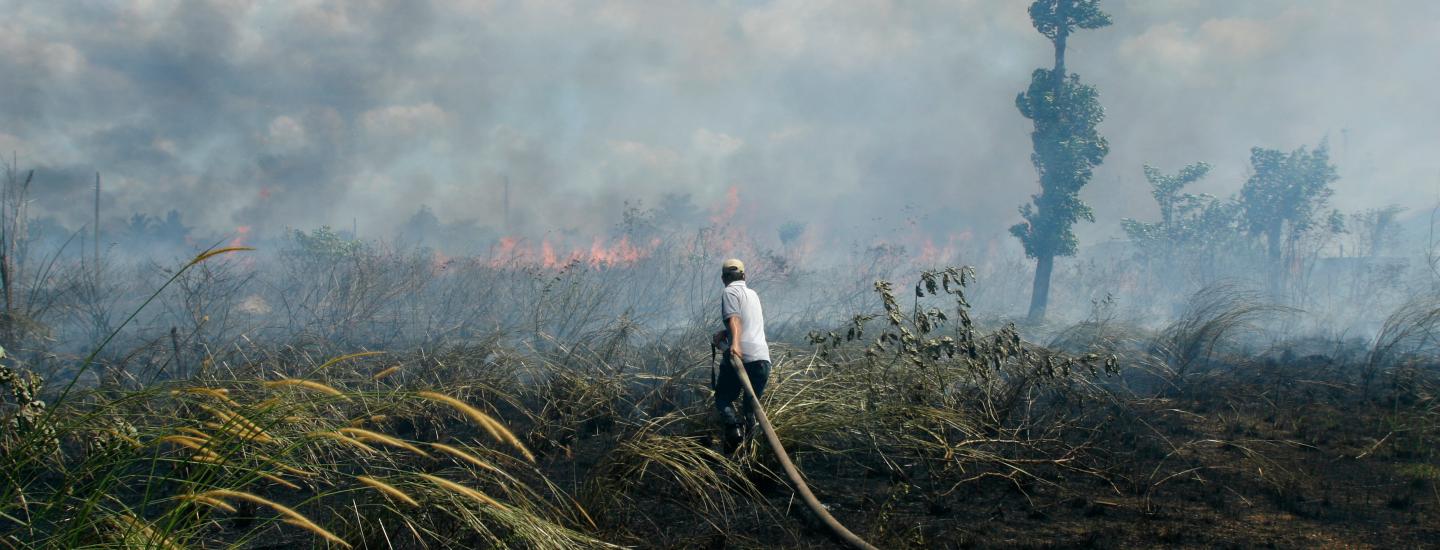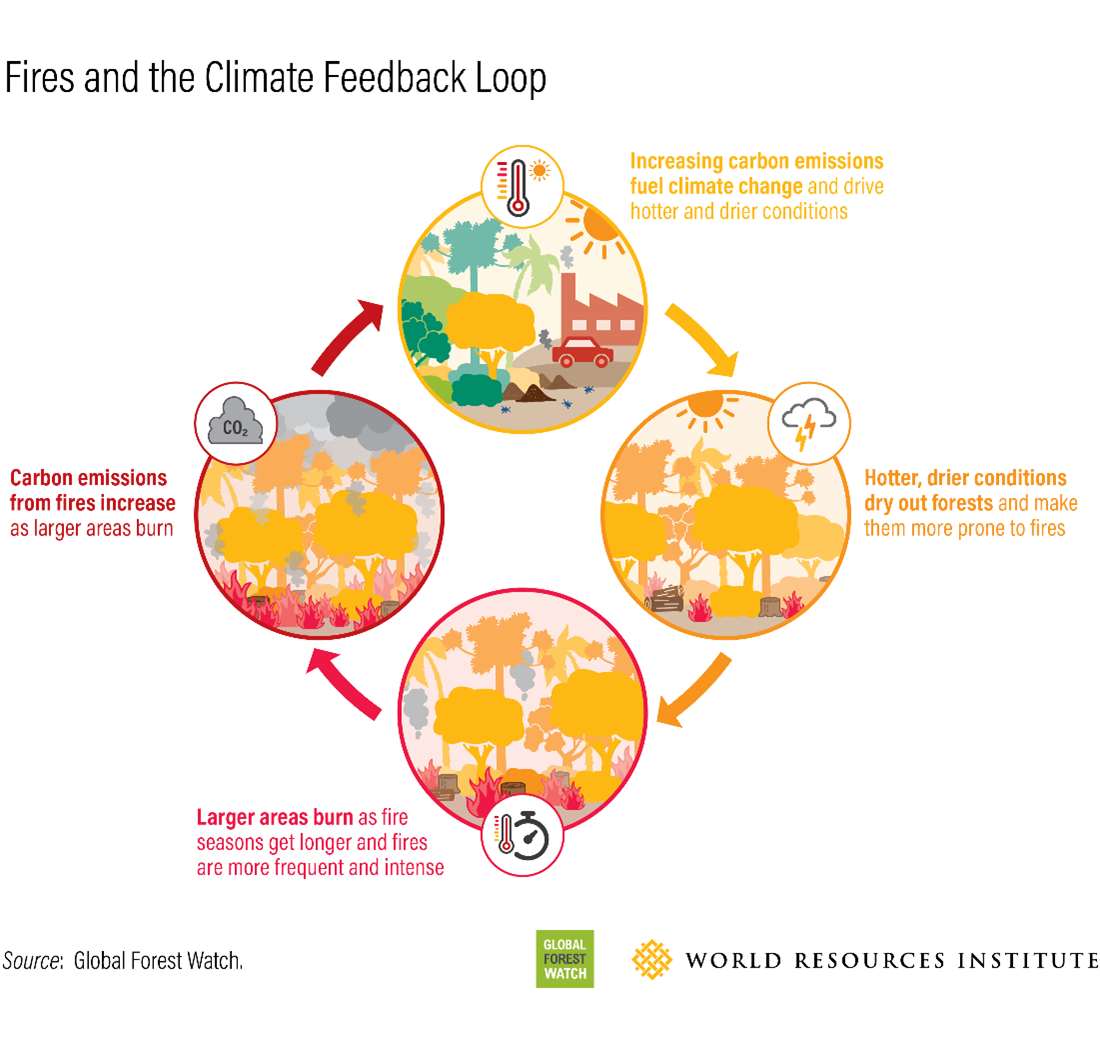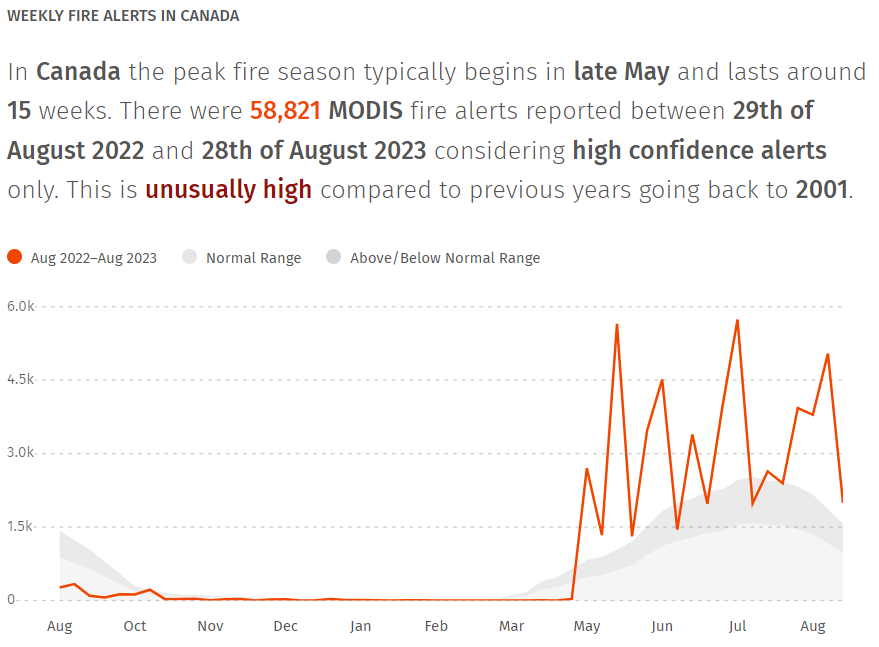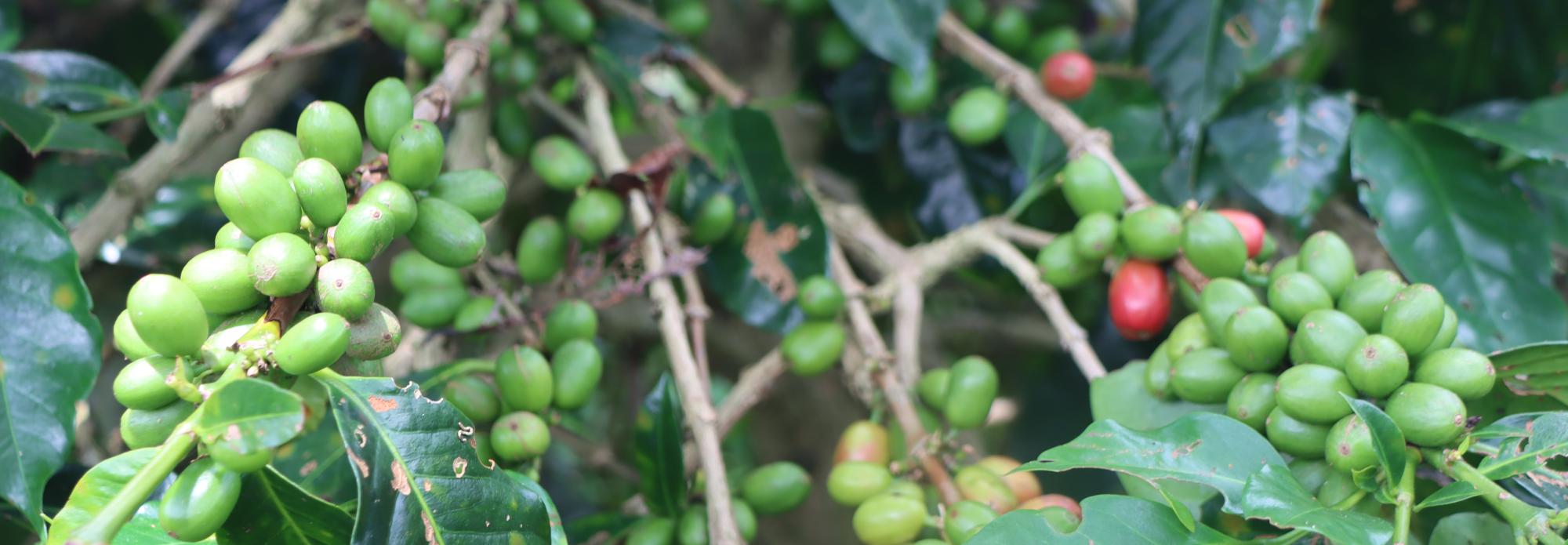- Forest Insights
The Latest Data Confirms: Forest Fires Are Getting Worse

Image by: Donny Sophandi/Shutterstock
The latest data on forest fires confirms what we’ve long feared: Forest fires are becoming more widespread, burning nearly twice as much tree cover today as they did 20 years ago.
Using data from a recent study by researchers at the University of Maryland, we calculated that forest fires now result in 3 million more hectares of tree cover loss per year compared to 2001 — an area roughly the size of Belgium — and accounted for more than one-quarter of all tree cover loss over the past 20 years.

2021 was one of the worst years for forest fires since the turn of the century, causing an alarming 9.3 million hectares of tree cover loss globally — over one-third of all tree cover loss that occurred that year. Though down from the previous year, over 6.6 million hectares of tree cover was lost to forest fires in 2022, similar to other years over the past decade. And in 2023, the world has already seen heightened fire activity, including record-breaking burns across Canada and catastrophic fires in Hawaii.
Climate Change is Making Fires Worse
Climate change is one of the major drivers of increasing fire activity. Extreme heat waves are already 5 times more likely today than they were 150 years ago and are expected to become even more frequent as the planet continues to warm. Hotter temperatures dry out the landscape and help create the perfect environment for larger, more frequent forest fires. This in turn leads to higher emissions from forest fires, further exacerbating climate change and contributing to more fires as part of a “fire-climate feedback loop.”

This feedback loop, combined with the expansion of human activities into forested areas, is driving much of the increase in fire activity we see today.
Here’s a look at some of the places most impacted by increasing forest fires, based on the latest data:
Mounting Temperatures Are Fueling More Severe Fires in Boreal Forests
The large majority — roughly 70% — of all fire-related tree cover loss over the past two decades occurred in boreal regions. Though fire is a natural part of how boreal forests function ecologically, fire-related tree cover loss in these areas increased by a rate of about 110,000 hectares (3%) per year over the last 20 years — about half the total global increase between 2001 and 2022. Increasing fire activity in boreal forests is likely due to the fact that northern high-latitude regions are warming at a faster rate than the rest of the planet. This contributes to longer fire seasons, greater fire frequency and severity, and larger burned areas in these regions.
For example, in 2021, Russia saw an astonishing 5.4 million hectares of fire-related tree cover loss, the most recorded in the last 20 years and a 31% increase over 2020. This record-breaking loss was due in part to prolonged heatwaves that would have been practically impossible without human-induced climate change.
Furthermore, in the first two months alone of Canada’s 2023 wildfire season, the country saw record high levels of burning across both eastern and western provinces fueled by warmer than average temperatures and drought conditions. The Canadian Interagency Forest Fire Centre reports that an estimated 9.5 million hectares of land was burned between January and July 2023, an area equivalent to the size of Portugal.

This trend is worrying because boreal forests store 30%-40% of all terrestrial carbon globally, making them one of the largest land-based carbon storehouses on the planet. Most carbon in boreal forests is stored underground in the soil, including in permafrost, and has historically been protected from infrequent fires that occur naturally. But changes in climate and fire activity are melting permafrost and making soil carbon more vulnerable to burning.
These shifting forest dynamics could eventually turn boreal forests from a carbon sink (an area that absorbs more carbon than it emits) into a source of carbon emissions.
Agricultural Expansion and Forest Degradation Are Stoking Fires in Tropical Forests
In contrast to boreal forests, stand-replacing fires are not a usual part of the ecological cycle in tropical forests. Yet fires are increasing in this region as well. Over the last 20 years, fire-related tree cover loss in the tropics increased at a rate of about 36,000 hectares (around 5%) per year and accounted for roughly 15% of the total global increase in tree cover loss from fires between 2001 and 2022.
Though fires are responsible for less than 10% of all tree cover loss in the tropics, more common drivers like commodity-driven deforestation and shifting agriculture make tropical forests less resilient and more susceptible to fires. Deforestation and forest degradation associated with agricultural expansion lead to higher temperatures and dried out vegetation, creating additional fuel and allowing fires to spread more quickly.
In addition, it is relatively common in this region to use fires to clear land for new pasture or agricultural fields after trees have been felled and left to dry. This tree cover loss is not attributed to fires in the new data because the trees have already been cut down. However, during periods of drought, intentional fires can accidentally escape newly cleared fields and spread into surrounding forests. As a result, almost all fires that occur in the tropics are started by people, rather than sparked by natural ignition sources like lightning strikes. And they are exacerbated by warmer and drier conditions, which can cause fires to rage out of control.
Similar to boreal forests, increasing tree cover loss due to fires in the tropics is causing higher carbon emissions. Previous studies found that in some years, forest fires accounted for more than half of all carbon emissions in the Brazilian Amazon. This suggests the Amazon basin may be nearing or already at a tipping point for turning into a net carbon source.
Heatwaves and Shifting Population Patterns Increase Fire Risk in Temperate and Subtropical Forests
Historically, fires in temperate and subtropical forests have burned less area than boreal and tropical forests: Combined, they accounted for 16% of all fire-related tree cover loss between 2001 and 2022. But the data shows that fires are increasing in these regions as well. And while temperate and subtropical areas tend to contain a larger proportion of managed forests — which can contain fewer species and store less carbon than natural ones — fires in these regions still pose significant risks for people and nature.
As with boreal forests, climate change is the primary driver behind the increasing fire activity in temperate and subtropical forests. For example, heat waves and summer droughts play a dominant role in driving fire activity across the Mediterranean basin. In 2022, record-breaking heat and drought in Spain resulted in more than 70,000 hectares of tree cover burned, the largest amount since 2001. Five years earlier, more than 130,000 hectares of tree cover burned in Portugal under similar circumstances — a greater loss than the previous ten years combined.
Land use changes in and around temperate and subtropical forests are also compounding the impacts of climate change. In Europe, the abandonment of agricultural land in recent years has been followed by excessive vegetation growth that has increased fire risk. In the United States, natural lands are being converted into “wildland-urban interfaces” (places where homes and other manmade structures intermingle with trees and vegetation), increasing the risk of fire ignitions, damage and loss of life.
For example, one of the largest fires in the United States in 2022, California’s Mosquito Fire, burned thousands of hectares of forest in and near areas classified as wildland-urban interfaces, destroying 78 structures in nearby communities. A faulty power line likely started the fire but record temperatures and a lack of humidity allowed it to spread widely. This was just one of many fires that made 2022 a record year in the U.S., with almost 1 million hectares of tree cover burned across the country, resulting in roughly $3.2 billion in damage.

Both the annual cost and number of deaths from wildfires in the United States have increased over the past four decades. As human activities continue to warm the planet and reshape the landscape, deadly, multi-billion-dollar disasters like these will likely become more common.
How Do We Reduce Forest Fires?
The causes of increasing forest fires are complex and vary by geography. Much has been written about how to manage wildfires and mitigate fire risk, but there is no silver bullet solution.
Climate change clearly plays an important role in driving more frequent and intense fires, especially in boreal forests. As such, there is no solution for bringing fire activity back down to historical levels without drastically reducing greenhouse gas emissions and breaking the fire-climate feedback loop. Mitigating the worst impacts of climate change is still possible, but it will require rapid and significant transformations across all systems.
In addition to climate change, human activity in and around forests makes them more susceptible to wildfires and plays a role in driving higher levels of fire-related tree cover loss in the tropics and elsewhere. Improving forest resilience by ending deforestation and forest degradation is key to preventing future fires, as is limiting nearby burning that can easily escape into forests, particularly during periods of drought.t.
While data alone cannot solve this issue, the recent data on fire-driven tree cover loss on Global Forest Watch, along with other fire monitoring data, can help us track fire activity in both the long term and in near-real-time to identify trends and develop targeted, responses.
View a webinar in English, Spanish, Portuguese and Bahasa Indonesia to learn more about tree cover loss from fires and other fire-related data on Global Forest Watch.


